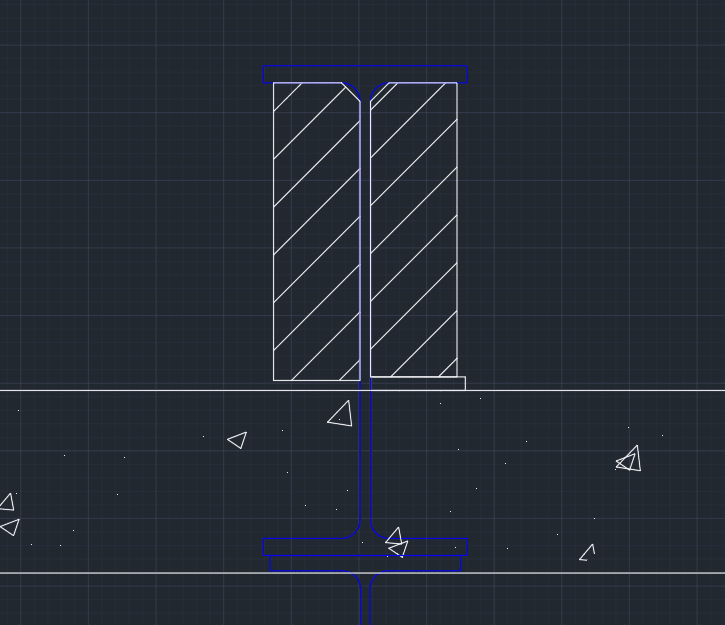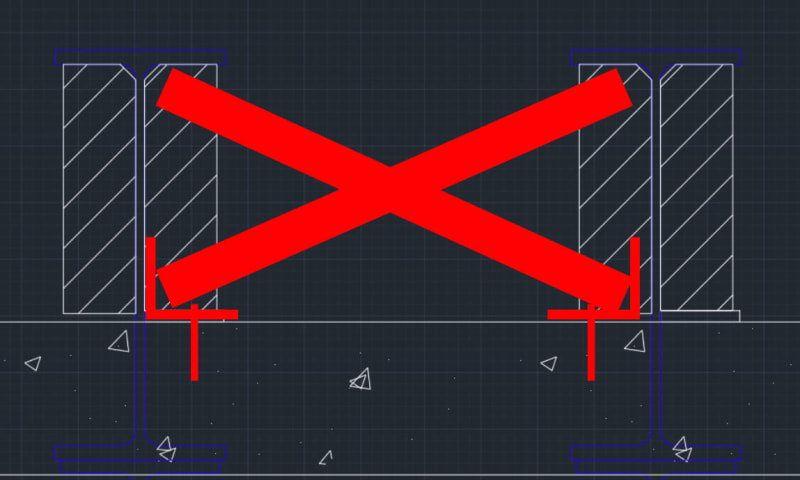I have a job where a piece of rotating equipment is sitting on top of steel beams. Rotation is in plane with the length of the beam, so theoretically there is no (or very little) lateral force on the top flange. The beams were supposed to be set such that the slab was poured flush with the top of the beam, however, the GC instead poured the bottom of the slab level with the bottom of the beam tension flange. This created the situation shown in the photo below. Now we are getting a very slight oscillating lateral movement at the top of the beam (~.04"), which I have been asked to come up with a fix for. My initial thought was to chip out the slab in a few locations and weld full height stiffeners at load and bearing points, but the contractor asked if it could be done without chipping out and just weld stiffeners as shown below, either with or without the addtional bearing plate between the stiffener and the slab.
I have already checked global bending capacity is fine without the full lateral bracing of the compression flange, we just need to fix the lateral deflection issue. I'm not really sure what calcs to run here as I dont believe this is a case of web yielding or crippling. I used the deflection to calculate a max lateral force on the flange but now what?? Any help here is appreciated.
TYIA

I have already checked global bending capacity is fine without the full lateral bracing of the compression flange, we just need to fix the lateral deflection issue. I'm not really sure what calcs to run here as I dont believe this is a case of web yielding or crippling. I used the deflection to calculate a max lateral force on the flange but now what?? Any help here is appreciated.
TYIA


